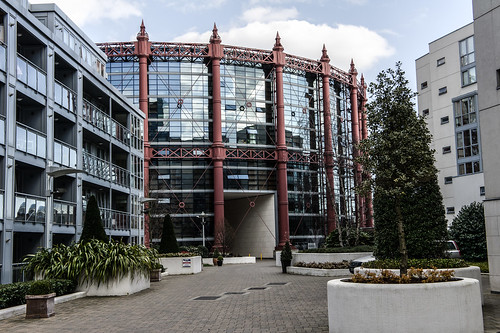Alliance Gasworks Apartments - A Sad Story
Converting an old gas storage unit (gasometer) into apartments was a nice idea but things did not work out as the developers had hoped.
A gasometer is a large container gas is stored near atmospheric pressure at ambient temperatures. The volume of the container follows the quantity of stored gas, with pressure coming from the weight of a movable cap. Typical volumes for large gasholders are about 50,000 cubic metres, with 60 metre diameter structures. Gasholders tend to be used nowadays for balancing purposes (making sure gas pipes can be operated within a safe range of pressures) rather than for actually storing gas for later use.
The pollution associated with gasworks and gas storage makes the land difficult to reclaim for other purposes, but some gasometers have been converted into other uses such as living space.
The restraints imposed by the shape of the building has meant that the layout of individual apartments did not appealed to the majority of initial viewers but almost as soon as the apartments became available 40 units were sold. However according to a report in the Irish Times none of those who paid booking deposits went on to sign contracts and one by one they dropped out as they realised that the apartments were overpriced.
I don't know the actual status of this development at present but it would appear that as the apartments could not be sold the developer decided to convert the block into a hotel but this plan did not go ahead.
The Irish Times - Wednesday, June 22, 2011:
"ONE OF the iconic symbols of the Irish property collapse – the Alliance Building in the Gasworks development in Ringsend, Dublin 4 – is shortly to be offered for sale as a single investment. All 210 apartments are currently rented at an average of €1,300 per month, equating to an annual rent roll of around €3,276,000."
Remediation of a former gasworks in Dublin (Ireland)
The soil at this former gas plant was severely polluted with tar and tarry products. The groundwater was also polluted with contaminants that were directly connected with gas extraction from coal, such as aromatics, PAH's and cyanides.
Remediation activities:
The site was completely sealed off by a bentonite wall that will prevent contamination from spreading in the future.
Waste products from the site had to be removed: liquid tar (1,300 tonnes), viscous tar (20,000 tonnes) and free oil products.
The top layer of gravel was excavated and washed. Then it was reused on the site (38,000 m³).
The contaminated soil was excavated and shipped to Europe for further treatment and reuse. 170,000 tonnes were treated by physical/chemical washing, 130,000 tonnes treated via thermal desorption.
The contaminated groundwater was pumped at an average volume of 500 m³ per day and treated via aeration, coagulation/flocculation, sedimentation, sand filtration and activated carbon filtration.
PHOTOGRAPHS OF DUBLIN
Wednesday, February 15, 2012
Alliance Gasworks Apartments - A Sad Story
Subscribe to:
Post Comments (Atom)

No comments:
Post a Comment